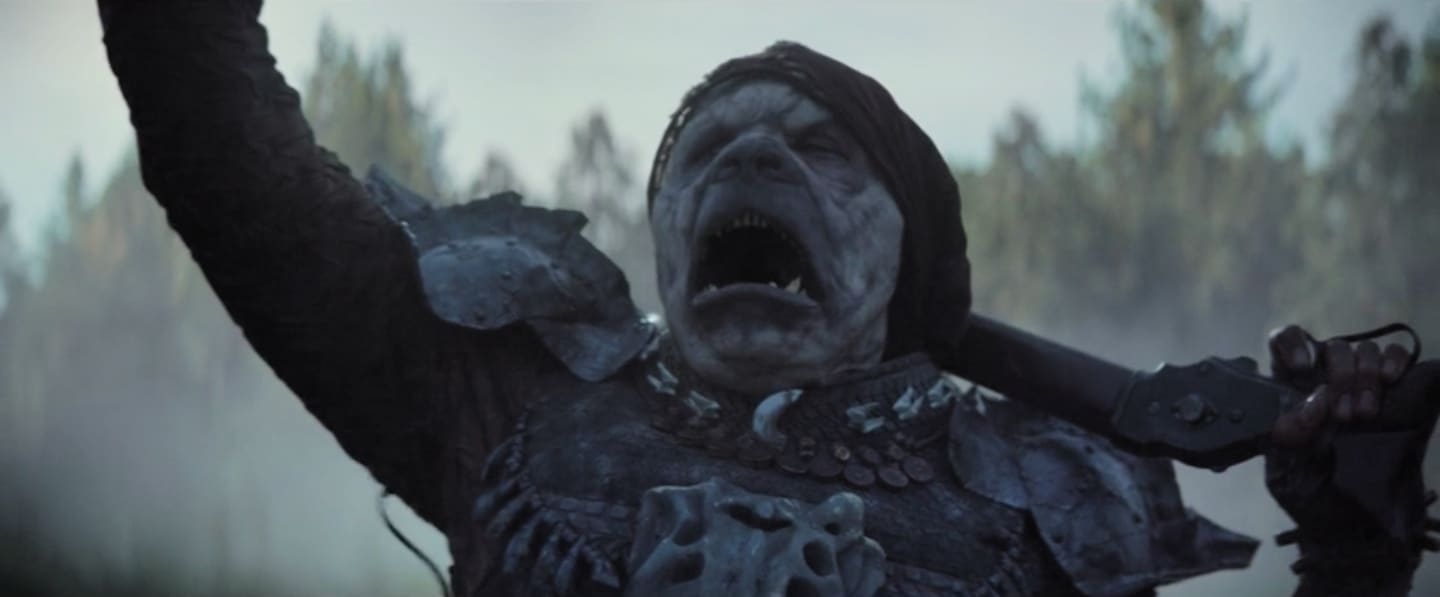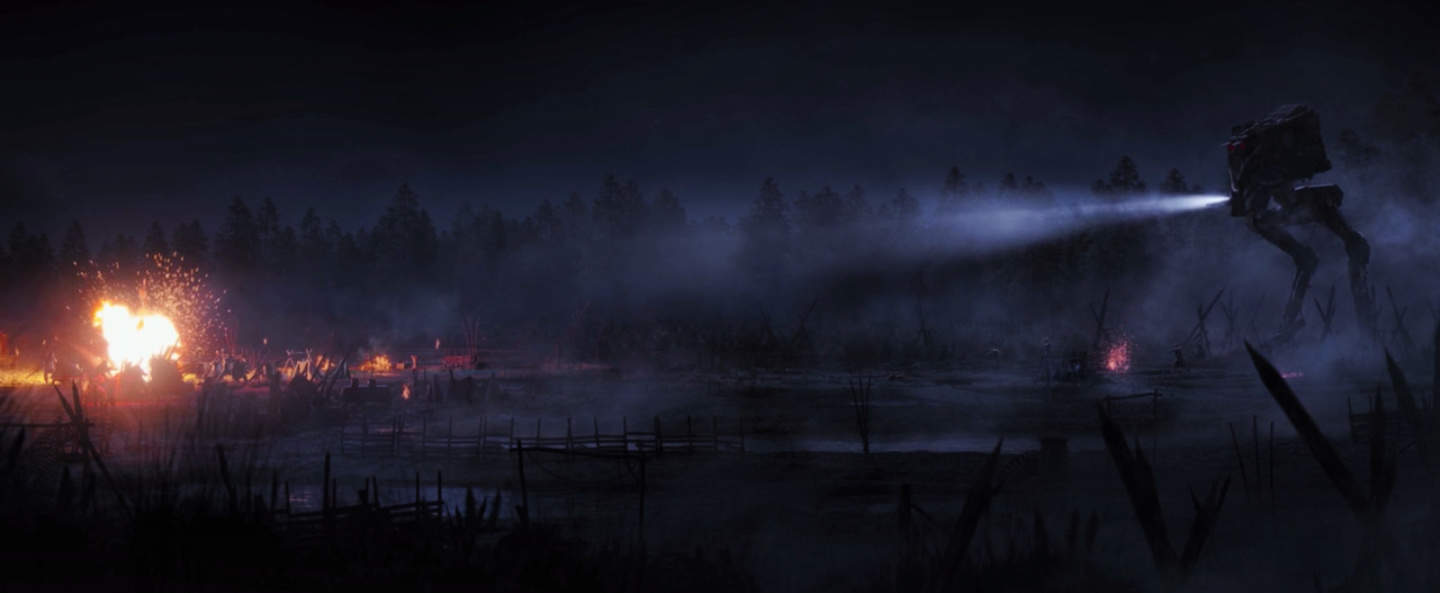Since its inception, Star Wars has been a celebration of cinema. George Lucas collected his passion for Flash Gordon serials, Harryhausen creature features, World War II sagas, Westerns, and Akira Kurosawa adventures and mashed them together into one epic sci-fi veneration. All films stem from those that came before, but if you want to stay true to the spirit of Star Wars, those influences must be worn obviously and proudly.
So far, since Lucasfilm fell under the Disney banner, the new filmmakers who have taken the reins have done a solid job of replicating that George Lucas celebratory filter. J.J. Abrams, Rian Johnson, Gareth Edwards, and Ron Howard splattered their entires with a feast of references and reverences. However, none have been as bold or blatant as showrunner Jon Favreau and The Mandalorian.
As a result, your enjoyment with each entry is determined by how much you appreciate such flagrant fanboy behavior. If you’re like me and you take possibly too much pleasure from eye-spying nods and winks to continuity and movie history, the show is a blast. If this behavior is exhausting or simply dull, then the latest chapter of The Mandalorian might have lost you from the very first sequence.

Chapter Four, “Sanctuary,” opens on a new planet: Sorgan. We meet a group of farmers sifting through their shallow rivers to acquire large piles of blue krill. The scene is serene and certainly cannot last. A rumble from the nearby forest spreads alarm through their ranks, and a group of puppy-faced Klatoonian pirates ambushes their spoils. We’ve seen these savage killers before, serving as guards in Jabba’s palace and as light snacks for the Sarlacc pit in Return of the Jedi. They’re no-good rapscallions.
A casual film lover doesn’t have to achieve much arithmetic to foresee the entire arc of the episode. We already know that Mando (Pedro Pascal) and his green-eared bounty child are on the run and looking for a hideout. One plus one equals Mando will land on Sorgan, happen upon the villagers, and since his good nature is already quite full and inviting after last week’s heroic decision, the bounty hunter will aid in the village’s plight against the Klatoonians.
We’re Star Wars fans, and that means, even if we never bothered to watch them, we have a basic understanding of Akira Kurosawa’s movies. Welcome to the umpteenth remake of Seven Samurai.

This is not the first time Star Wars has aped this particular movie either. A very similar scenario played out in the Clone Wars animated series episode “Bounty Hunters.” In that storyline, Anakin Skywalker, Obi-Wan Kenobi, and Ahsoka Tano team-up with four bounty hunters to aid in the protection of a village against a raiding party lead by reoccurring scumbag Hondo Ohnaka. Just as Kurosawa’s seven samurai train their villagers in the ways of combat, so do Skywalker, Kenobi, and Tano.
Wash, rinse, repeat: “Chapter Four: Sanctuary.”
Also similar to The Clone Wars episode, The Mandalorian does not offer much time to travel the same plot that Kurosawa traversed for nearly three and a half hours. In less than 40 minutes, this episode plops Mando on Sorgan, introduces a new ally in the shape of ex-Rebel full-time badass Cara Dune (Gina Carano), races to empathize with the villagers using your knowledge of previous pop culture as emotional shorthand, and wages glorious battle against the Klatoonians. When all is said and done, Mando is still on the run from the Imperial Client (Werner Herzog), and off to the next watering hole.
What the episode does not do is further the arc established by the previous three chapters. When the credits roll, it’s hard not to feel like you just experienced a bit of a stall, and you’re left wondering exactly what The Mandalorian as a series has to deliver. At the end of Chapter Three, “The Sin,” the series could have gone anywhere. At the end of the Bryce Dallas Howard-helmed “Sanctuary,” the series could still go anywhere, but if Chapter Five opens and we get another stall, oof, that will be quite the disappointment. Maybe The Mandalorian should have been a movie after all.

“This is the nature of war,” states Takashi Shimura in Seven Samurai. “By protecting others, you save yourself. If you only think of yourself, you’ll destroy yourself.” What Kurosawa does for The Mandalorian is to simplify Mando’s transformation from outlaw killer to noble antihero. We already love him because he picked up the baby and rescued him from the hateful experiments of the Empire, but now we see the mercenary as a traditional hero. He’s a reluctant defender of the weak. We respect him and can now cheer for him.
Star Wars roots its violence in “The Good Fight” proposed by Word War II propaganda and its resulting fictional storylines. Killing is a wicked act but sometimes a necessary one. Even a benevolent and great Jedi Master like Yoda will lead a squadron of clone troopers into combat if the soul of the galaxy is at risk. War can be honorable. The messaging is problematic, but not new.
Mando is a child of war. His parents fell before droids and the orders that programmed them. After four chapters, he appears to be the Batman of the Star Wars franchise. He experienced pain so that he can prevent that pain from happening to others. At the start of the series, his mission was his clan. Now, apparently, his mission is all who befall oppression. Like Han Solo before him, he’s gone from rogue to rebel.
The post ‘The Mandalorian’ Explained: Chapter Four appeared first on Film School Rejects.
0 comments:
Post a Comment